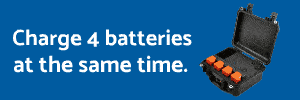- Joined
- Jul 23, 2020
- Messages
- 126
- Reaction score
- 132
- Age
- 63
Hi all,
I really enjoyed this moment. I was *just* barely outside of controlled airspace while trying to get as close to Charlotte's skyline as possible Thanksgiving night. When the fog hit late Thursday evening out I went. I was thwarted on previous occasions when I hit 400 feet and showed no sign of breaking through the fog. Homerun this time. Broke through the fog at 300 feet and had another 100 feet of wiggle room to get higher and a better angle on both the fog and city.
I can't get over the low light performance of these Autel EVO 2 Pro sensors. Granted it wasn't quite this silky right out of the camera, but it required very little tweaking. I ran it through Adobe Premier Pro and with a slight assist from the plug-in from Neat Video and after I crushed the blacks a little, goodbye noise. I was also impressed with the lack of banding, or false contouring in either the sky or the fog as I descended. I shot this in the log profile at ISO 800. I was mad at myself later because realized I shot this in the h.264 codec and not the h.265 codec which provides 10-Bit video. Nonetheless, still happy with the results.
From a safety standpoint, I had no problem maintaining visual contact with the drone. As you can see from the video, no problem seeing the lights below. I only flew it down and back a couple hundred feet and landed. I didn't want to press my luck. Enjoy!
Eric
I really enjoyed this moment. I was *just* barely outside of controlled airspace while trying to get as close to Charlotte's skyline as possible Thanksgiving night. When the fog hit late Thursday evening out I went. I was thwarted on previous occasions when I hit 400 feet and showed no sign of breaking through the fog. Homerun this time. Broke through the fog at 300 feet and had another 100 feet of wiggle room to get higher and a better angle on both the fog and city.
I can't get over the low light performance of these Autel EVO 2 Pro sensors. Granted it wasn't quite this silky right out of the camera, but it required very little tweaking. I ran it through Adobe Premier Pro and with a slight assist from the plug-in from Neat Video and after I crushed the blacks a little, goodbye noise. I was also impressed with the lack of banding, or false contouring in either the sky or the fog as I descended. I shot this in the log profile at ISO 800. I was mad at myself later because realized I shot this in the h.264 codec and not the h.265 codec which provides 10-Bit video. Nonetheless, still happy with the results.
From a safety standpoint, I had no problem maintaining visual contact with the drone. As you can see from the video, no problem seeing the lights below. I only flew it down and back a couple hundred feet and landed. I didn't want to press my luck. Enjoy!
Eric




